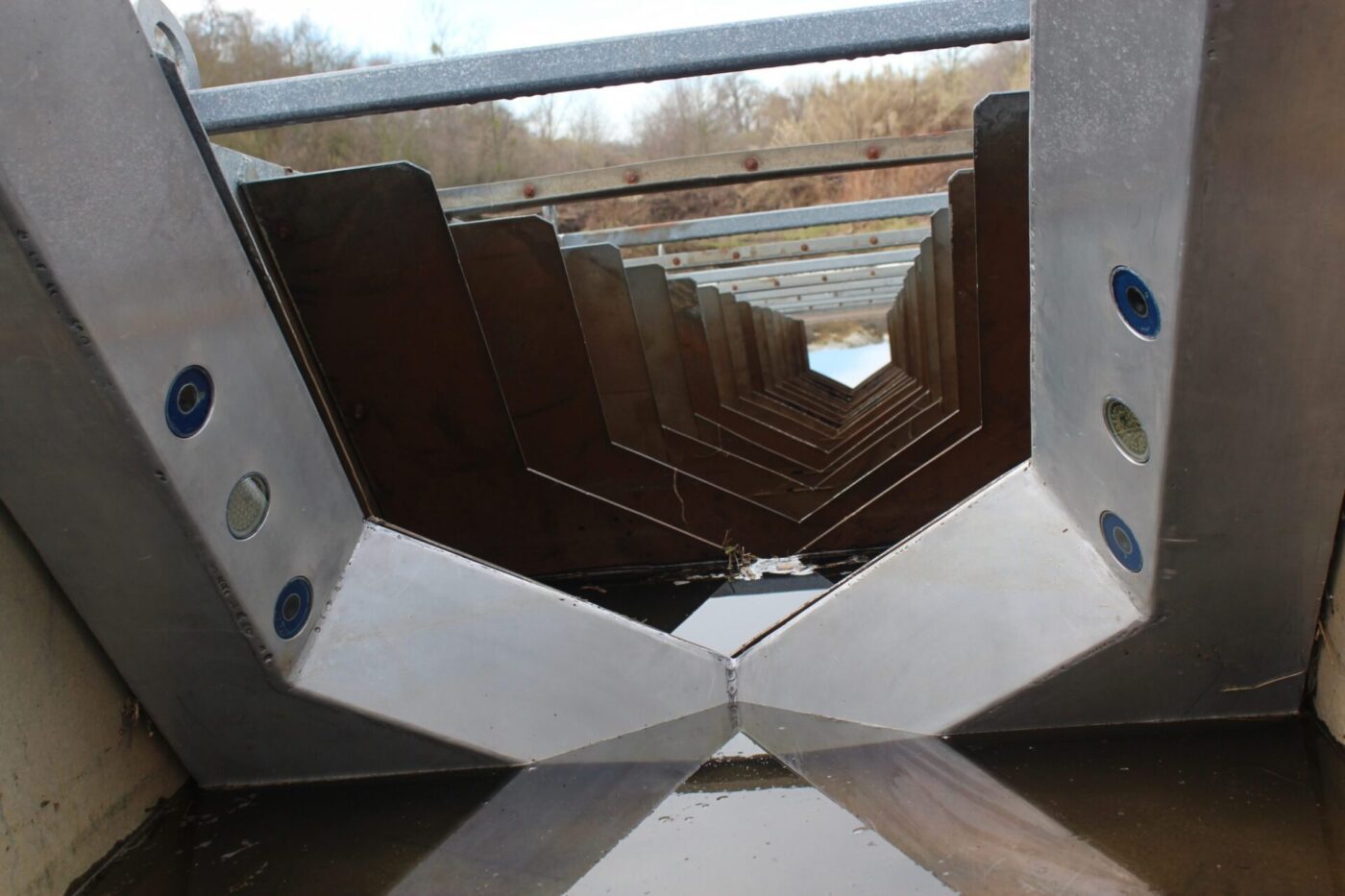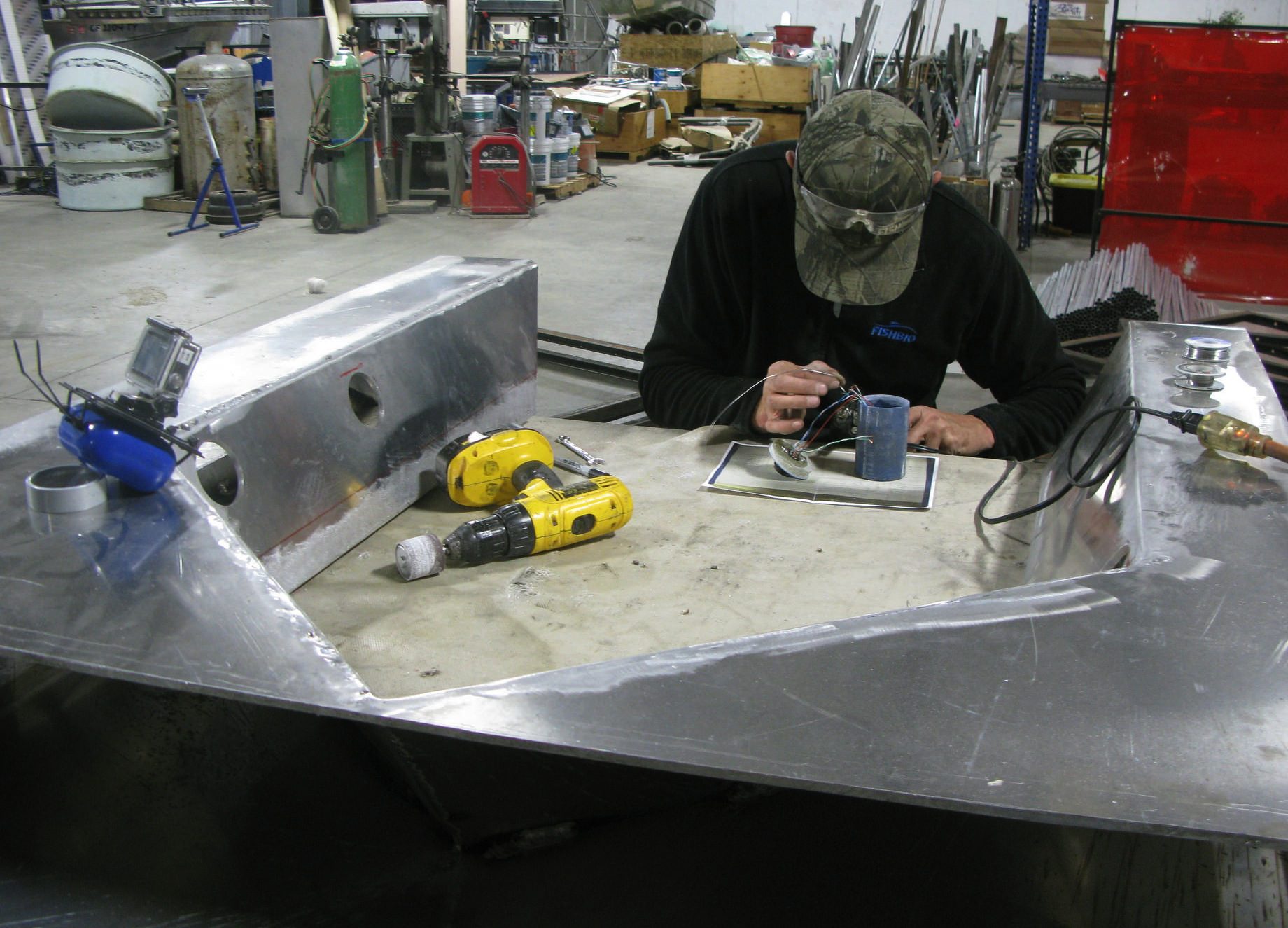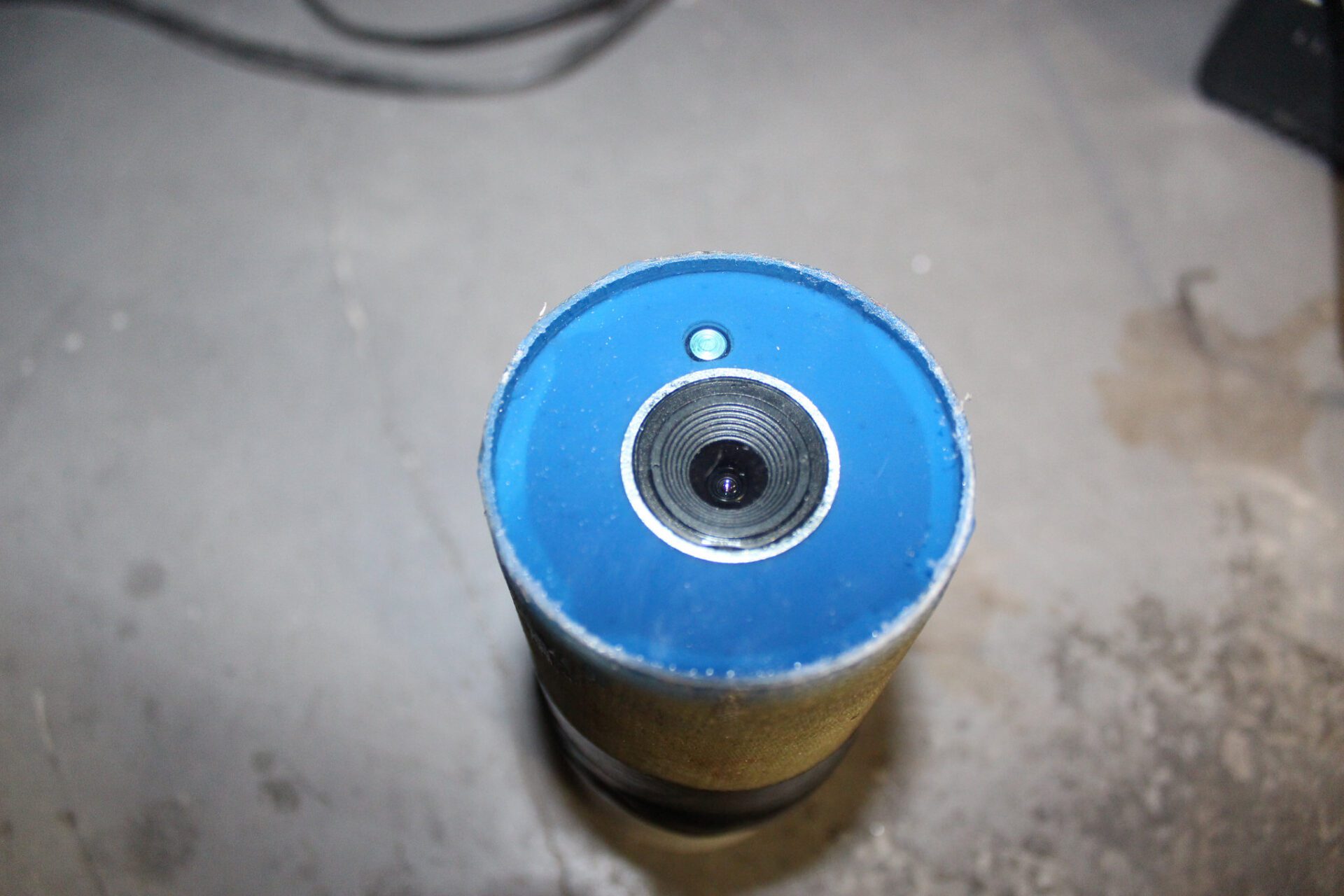Monday March 7, 2016

Fish ladders provide upstream passage for migratory fish over dams, weirs, and other barriers in waterways throughout the world. While these passage structures play an important role in helping fish access habitats they otherwise could not, fisheries biologists also value them for another reason: ladders are often perfect places for installing fish counting stations. Streams with migratory fish populations tend to be too wide for counting fish effectively, especially with an automated system. Ladders, on the other hand, are often narrow enough that just a few fish can pass through a given point at a time, making it easier to count them automatically. Considering the prevalence of fish ladders around the world, you would think many turn-key solutions exist for fish ladder monitoring needs. However, our FABLAB technicians quickly discovered that ladder-ready automated fish counters are not easily available, so we turned to our trusted alternative – and decided to build one ourselves.

The challenge facing our FABLAB team was to build a video monitoring system that could automatically count fish passing through a fish ladder, and was also cost-effective and durable to boot. Our team started with our Smolt Spy concept, then added multiple cameras and infrared lighting in a U-shaped housing that integrates seamlessly into the fish ladder. Many fish ladder video monitoring systems either record fish migrating upstream using cameras mounted overhead, or in swim-through tunnels at the top of the ladder. Overhead systems provide images of the backs of fish, making it difficult to identify fish to species or to collect important biological data such as sex, or note the presence of tags or marks. Traditional tunnel systems are under constant threat of high flows and large woody debris. Our new system slides right into the ladder almost like another “rung,” and provides optimal underwater viewing without the threat of being destroyed by debris or high flows.

The key to this new system is the small size of the cameras and their custom protective housings, which allow them to be installed in the baffles of a fish ladder. Each side of the ladder is equipped with two high-definition video cameras and an infrared light embedded into a baffle, which enables video recording even in complete darkness. Multiple cameras allow monitoring to occur under both high- and low-flow conditions, and provide redundancy in case of failure. Since fish often migrate during times of high turbidity, which decreases visibility, we installed cameras on both sides of the ladder to reduce the distance each camera needs to see through. The cameras are a high-definition, wide-angle, internet protocol (IP) type, and are each encased in a custom fiberglass housing, ensuring they are completely waterproof. The IP cameras are higher resolution than typical closed-circuit security cameras, which helps provide quality images in turbid and low-light conditions.
When darkness falls, a photovoltaic sensor triggers the cameras to switch to black-and-white recording, which utilizes infrared light. The infrared lights use very little power, but provide just enough light for the camera to capture quality images in the dark. These lights are not visible to the eyes of humans or fish, so there is no concern of drawing the attention of vandals or of affecting the migration of fish through the ladder. The low power consumption of the entire system allows it to be operated on solar power, which is important because many ladders are built in remote locations.

Any biologist with experience using video to monitor fish passage knows that a potential downside to such systems is the time required to review video files and look for fish passages. We solved this problem in our new ladder system by incorporating the motion-detection software developed for our Smolt Spy, which significantly reduces the amount of time required to review recorded video to identify passages. The software includes the ability to tailor the motion detection sensitivity to adjust to changing conditions as needed. For instance, turbulence at the water surface could trigger camera operation. In addition to providing short clips of fish passages, the system can also simultaneously provide a continuous, 24-7 video recording, which serves as a backup.



With no off-the-shelf solutions available to meet our needs, we ended up with a completely custom-built system, down to cutting the glass lenses for the camera housings and wiring the plugs. After some painstaking effort, we’ve developed a system that meets our standards and is now deployed in the field, ready to collect video of migrating salmonids. The ladder in this ephemeral system has not had much water in it during the last few dry weeks, but things are likely to get flowing again given the most recent bout of rain. We’re excited to see the camera system get put the test, and are already looking forward to exploring new applications for our latest fish monitoring technology.
This post featured in our weekly e-newsletter, the Fish Report. You can subscribe to the Fish Report here.
